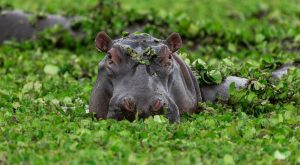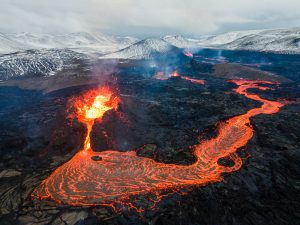The skin is the body’s largest organ, serving as a barrier to viruses, a thermostat, and a source of tactile feedback.
There are three primary layers of the skin: the epidermal, dermal, and hypodermic layers, all of which have their own purpose.
But is the skin also the heaviest part of the human body?
Yes, the skin is not only the largest organ but also the heaviest part of the human body. It accounts for more than 15% of our body weight.
The skin serves a myriad of purposes, the reasons for its size and weight.
Keep reading to learn more about the skin, its weight, and the significant purpose it serves.
Table of Contents
What Is the Heaviest Part of the Body?

The skin carries the bulk of our body’s weight. Weight-wise, it accounts for about 16 percent of an individual’s total weight, based on their dimensions.
Additionally, the skin is our body’s biggest organ.
Protecting the interior organs from drying out, bodily harm, germs, and radiation is the primary function of the skin.
About 10 percent of someone’s body weight is made up of only one leg, which contains multiple structures from several other biological systems.
The liver weighs the most inside, typically 3.4 pounds, followed by the brain, just under three pounds.
What Is Skin?
Minerals, fat, protein, and water make up the body’s biggest organ. It is your skin’s job to keep your body clean and at a comfortable temperature.
Skin nerves allow you to detect heat and cold.
The integumentary system includes your sweat glands, oil glands, nails, hair, and skin. The term “integumentary” refers to the body’s outer layer of cells and tissues.
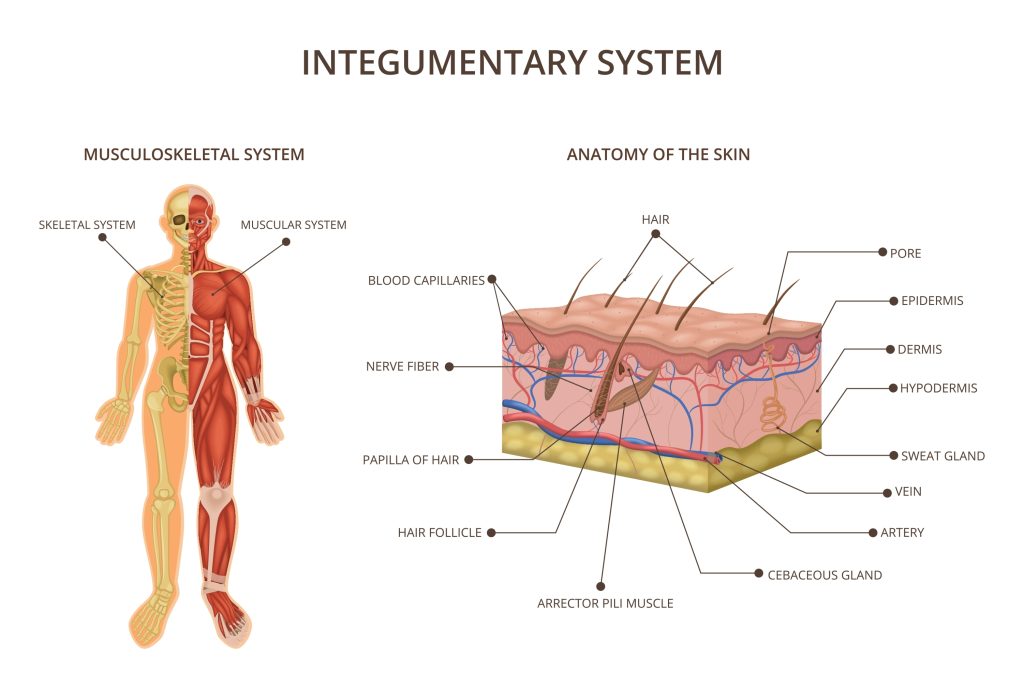
The skin consists of three layers of tissue:
- The epidermis or outermost layer of skin
- The dermis or middle layer
- The hypodermis or fatty layer beneath the epidermis and dermis
What Is the Epidermis Responsible for?
The epidermis is the outermost layer of your skin that you feel and see. Keratin, a protein found inside skin cells, is what holds the cells intact, and it works in conjunction with other proteins to build this outer layer.
Barrier function: The epidermis prevents germs and bacteria from going into the body as well as the bloodstream.
The epidermis also protects the body from water and sun damage.
The epidermis is constantly renewing its cells. Your body eliminates about 40,000 old skin cells daily, and the new ones replace them.
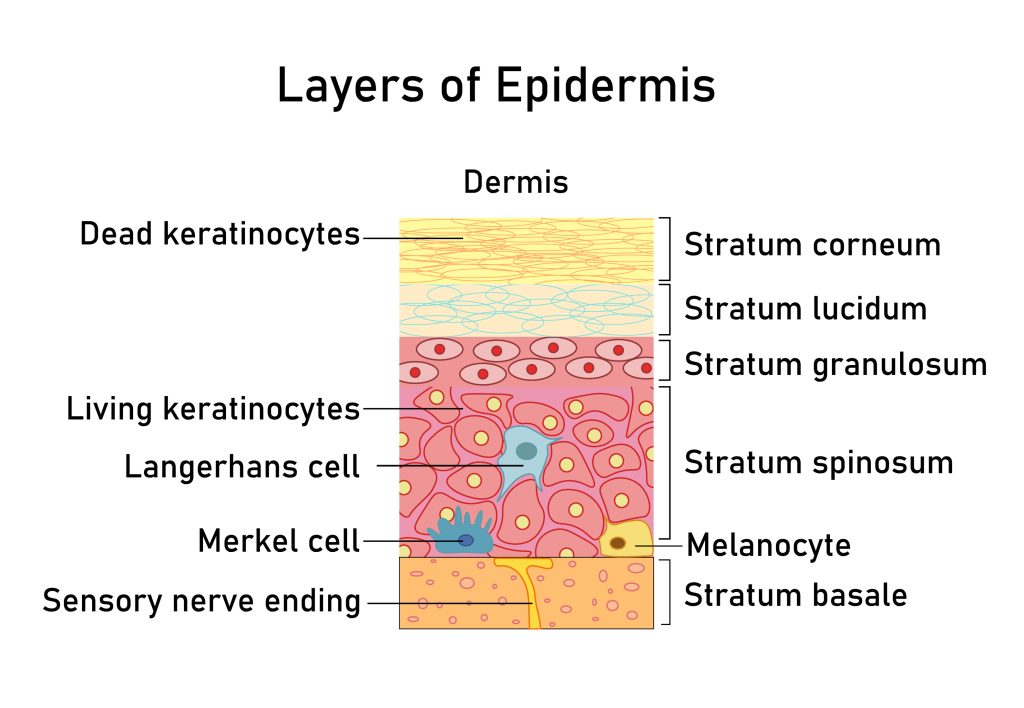
Every month, your skin regenerates itself completely from the inside out.
Melanin, which provides the skin’s color, is found in the epidermis. A person’s eyes, hair, and skin color are all influenced by how much melanin the body releases through its melanocytes.
Humans who produce more melanin get brown faster.
Functions of the Dermis
The dermis accounts for 90 percent of the skin’s thickness. Some features include:
- Elastin and collagen are two proteins that give the skin its suppleness and elasticity. Elastin, another dermal protein, aids in skin pliability. It also aids in the reshaping of stretched skin.
- The dermis is where hair follicle roots attach.
- When anything is too hot, scratchy, or soft to the touch, dermal nerves notify you. Those nerve sensors are also responsible for allowing you to experience pain.
- Within the dermis, the skin’s oil glands produce oil, which keeps the skin supple and hydrated. Whenever you swim or get trapped in a thunderstorm, the oil helps keep the skin from soaking up a lot of water.
- Sweat glands are in the dermis and produce sweating, which secretes moisture into the air via your pores. Your body temperature can be maintained via sweating.
- Dermal blood vessels supply nutrition to the epidermis, which helps to keep it healthy.

What Does the Hypodermis Do?
The fatty layer covers the hypodermis, the skin’s lowermost layer. The lower half of the body:
- Hypodermis fat acts as a cushion for muscles and bones in the event of a fall or an injury.
- Bones and skin layers are linked by connective tissue.
- Nervous and vascular health is improved. With each layer of skin, blood vessels and nerves grow larger until they reach the hypodermis (the deepest layer). The hypodermis is connected to the rest of the body through these nerves and blood vessels.
- The fat in your hypodermis controls your body’s temperature.
What Are the Most Common Skin Problems and Diseases?
Your skin is vulnerable to a variety of ailments since it serves as your body’s external defense mechanism. Among them are:
- Rashes caused by contact dermatitis
- Blisters
- Mosquito, tick, and spider bites
- Melanoma (a type of skin cancer)
- Inflammation of the skin, such as cellulitis
- An itchy, red rash on the skin
- Discoloration of the skin due to various skin conditions such as hyperpigmentation, vitiligo, and eczema. These include moles, blemishes, freckles, and other types of skin imperfections.
- Scars, burns, wounds (particularly those caused by the sun).

What Can We Do to Keep Our Skin Safe?
As you get older, your skin loses elastin as well as collagen. The dermis becomes thinner as a result of this.
The skin might wrinkle for this reason. Even though aging can’t be halted, taking these steps can help keep your skin looking its best.
- Every day, even if you spend most of your time indoors, make sure you put on sunscreen. Use a broad-spectrum sunscreen with an SPF of 30 or higher.
- Don’t get a tan, whether it’s indoors or out. Tanning damages the skin and can lead to cancer.
- Positively manage your stress. Certain skin disorders might be made worse by stress.
- Regularly inspect your skin and moles for changes that could indicate skin cancer.
- Quit smoking. Cigarettes and e-cigarettes contain substances that accelerate the aging process of the skin.
- In the morning and at night, wash your face with a mild cleanser.
- To avoid dry skin, take a shower every day then utilize a moisturizing lotion.

The Number of Organs in the Human Body
The human body has between 75 and 80 organs which together are known as the organ system. We wouldn’t be here if it weren’t for these mechanisms.
The simplest way to describe an organ is as a collection of tissues that serve a single purpose in the body.
Organs are made up of several billion cells and millions of tissues that combine to perform a specific task.
Organs in the human body include the brain, stomach, lungs, liver, kidneys, heart, skin, and more.
How Much the Liver Weighs and Its Functions
The human liver is the body’s biggest, most complex metabolic organ. It is estimated that the human liver plays a role in more than 500 processes.
The liver is situated under the lungs and rib cage in the upper right part of the stomach. As a robust organ, it weighs about 3–3.5 pounds.
Functions of the Liver

Out of all the human organs, only the liver can fully rejuvenate. The following are some of the liver’s most critical jobs:
- Bile production and bile excretion
- Cleanse and purify the blood
- Blood clotting
- Plasma protein production
- Glycogen storage
- Filter toxins
- Metabolize glucose
- Store glycogen, minerals, and vitamins
How Large Is the Human Brain?

About two percent of the body’s weight is made up of the brain, which is about three pounds.
The dimensions of the human brain are rough as follows:
- 14 cm in width
- 3.6″ in height
- 6.5″ in length from the front to the back.
Understanding The Size and Function of the Lungs
Based on storage ability, the lungs could be considered the body’s largest organ. Humans can store between four and six liters of air in a typical human lung.
Healthy human lungs weigh over 1100 grams in total. The entire span of the two lungs’ airways is approximately 1,500 miles.
A person’s right lung is larger than the left one.

The combined volume of the two lungs is the same as a tennis court. As a result, they are referred to as the human body’s largest inner organ.
The Heart’s Dimensions
After the lungs, the heart is the second-largest inner organ.
If you put two hands together, it’s the size of a closed fist. The typical human heart is about:
- 12 cm in length (4.7 inches).
- 8.5 cm in width, or 3.3 inches
To put it into perspective, the average human heart pumps barrels of blood totaling 1.5M in their lifespan.
What are the Most Significant Variations Between the Skin Structures of Humans and Animals?
The largest organ, the skin, is the primary line of defense against exterior threats.
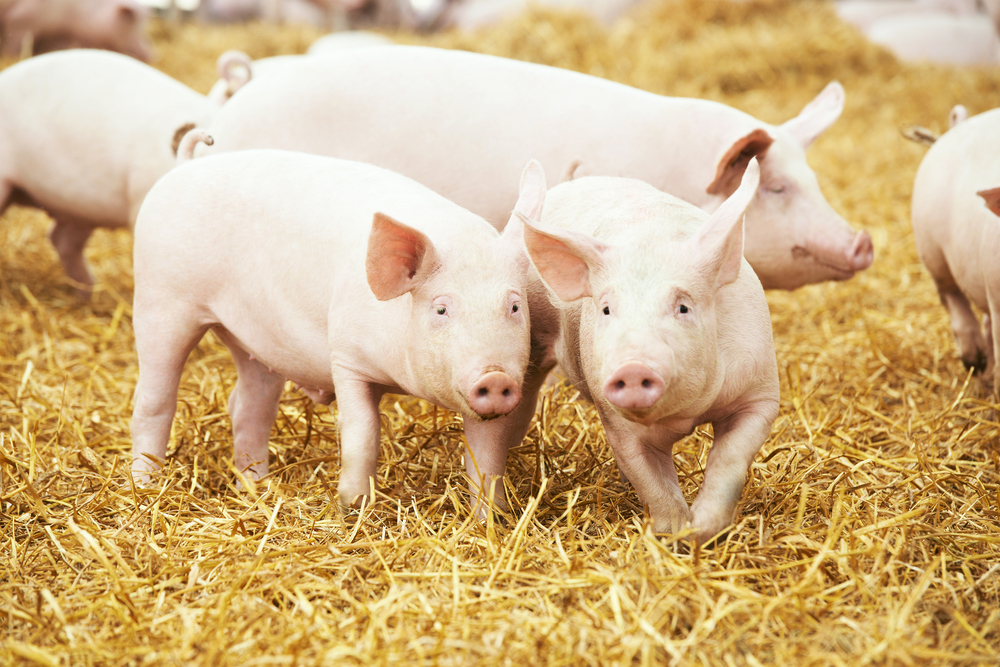
The hypodermic, dermis, and epidermis are the three main levels of human skin, and these features are shared by both mice and pigs.
Keratinocytes within the epidermis, predominate as the major skin barrier in the outermost skin layer.
The epidermis of pigskin is very similar to that of humans, having a similar thickness. Conversely, the epidermis of small mammals is considerably thinner than that of larger mammals.
In terms of biochemistry, the porcine cutaneous collagen in pigs is very comparable to human dermal collagen.
In pigs and humans, a fat coating serves as the primary means of insulation, despite its greater thickness in pigs.

Mouse skin is coated in a thick covering of fur, meaning the hypodermis can be thinner as the fur helps mice to regulate their heat.











